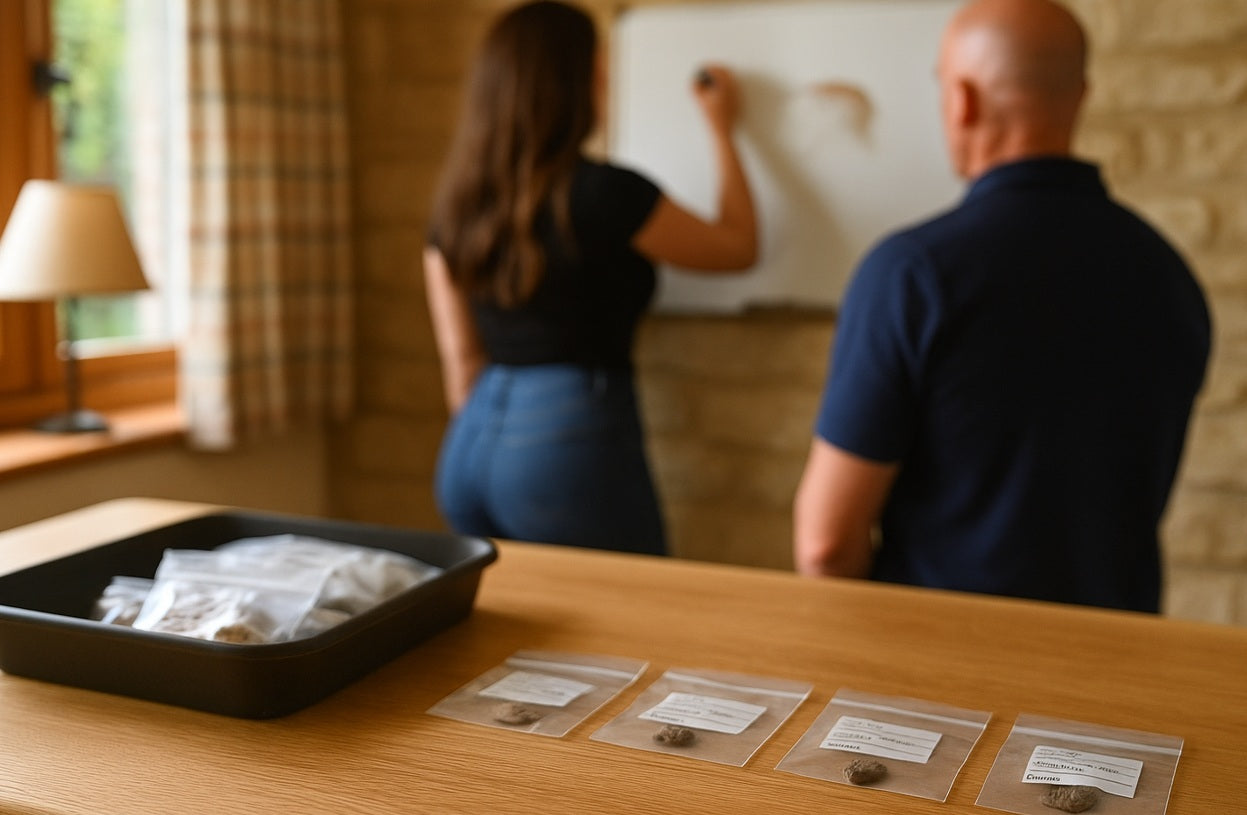
Recording Finds: Preserving Our Past
Every find tells a story. From coins to pottery, recording artefacts helps build a clearer picture of our shared history. Learn how proper documentation - through schemes like PAS - ensures that even the smallest objects are never forgotten.
How and Why do we record our finds?
Discover how recording archaeological finds contributes to our shared history. Learn about the Portable Antiquities Scheme (PAS), the role of Finds Liaison Officers (FLOs), and the Treasure Act, and explore notable discoveries from Dorset.
Recording Finds Properly: What is the PAS, FLO, and the Treasure Act? In the UK, we’re incredibly fortunate to live in a country with layers of history beneath our feet. Whether it’s a flint tool, a medieval coin, or a fragment of pottery, each find tells a story. But a single object on its own is just a piece of the puzzle - only by recording what we find properly can we begin to understand the broader picture of our shared past.
What is the Portable Antiquities Scheme (PAS)? The Portable Antiquities Scheme (PAS) is a voluntary initiative run by the British Museum in England and Amgueddfa Cymru – Museum Wales. It encourages the public to record archaeological objects they discover. Whether you’re metal detecting, beachcombing, or just out walking, if you find something potentially historic, the PAS provides a way to get it identified, recorded, and shared.
All recorded finds are added to a public online database at:
www.finds.org.uk
Who is the FLO? The Finds Liaison Officer (FLO) is a trained archaeologist who works within the PAS. Every county or region has its own FLO, and they are your go-to person for recording finds. FLOs can help identify objects, record them professionally, and advise you on what to do next - including conservation, research value, and legal steps.
To find your local FLO, go to:
https://finds.org.uk/contacts
What is the Treasure Act? The Treasure Act 1996 is the legal framework that defines what kinds of finds must be reported. Typically, this includes:
Items that are at least 10% gold or silver and over 300 years old
Two or more coins from the same find, if they are over 300 years old
Any associated objects found with these
Prehistoric metal hoards, even if they’re not made of precious metal
If you believe you’ve found treasure, it must be reported within 14 days to your local coroner or FLO. The process is there to make sure nationally significant items are preserved and properly valued. If acquired by a museum, a reward is usually offered and split equally between the finder and landowner.
To read the full Treasure Act Code of Practice, visit:
https://www.gov.uk/guidance/treasure
Why We Record We don’t record finds because someone tells us to - we do it because we care. Whether it’s a 4,000-year-old flint scraper or a Victorian coin, each object helps to reveal the human story behind it. When we record things properly, we protect that story from being lost.
Unlocking the secrets locked in sediment for hundreds, sometimes thousands of years comes with responsibility. By recording what we find, we contribute to something greater: a growing, shared understanding of our collective past. Every find matters. Every entry adds context. Together, we’re building a more complete picture of the people who came before us.
My discoveries that have been classed as treasure
-

Henry III Silver Penny Hoard (Treasure Find)
A dispersed hoard of silver long cross pennies dating to the reign of Henry III (1216–1272), discovered in Dorset and spread across a 40-metre area. Struck between 1247 and 1272, these coins were part of a major currency reform intended to curb clipping. Each penny bears the crowned bust of the king on the obverse and a long cross reverse naming the issuing moneyer and mint.
-

17th-Century Silver Buckle (Treasure Find)
A silver buckle dating to the 17th century, likely worn at the knee or shoe as part of high-status dress. Featuring a complete frame and chape with pointed prongs, the piece bears clear hallmarks aiding its identification. Found in Dorset, it was officially declared Treasure under the Treasure Act after going through the full recording process.
-

Anglo-Saxon Silver Pyramid Mount (Treasure Find)
A finely crafted silver pyramid mount dating to the 6th–7th century AD, likely used as a decorative fitting for a sword scabbard or belt. Featuring recessed triangular panels in a striking geometric design, this piece reflects the high-status craftsmanship of early Anglo-Saxon England. Discovered in Dorset.


